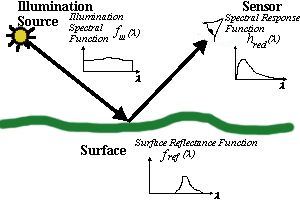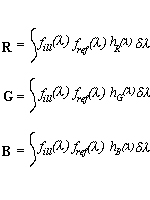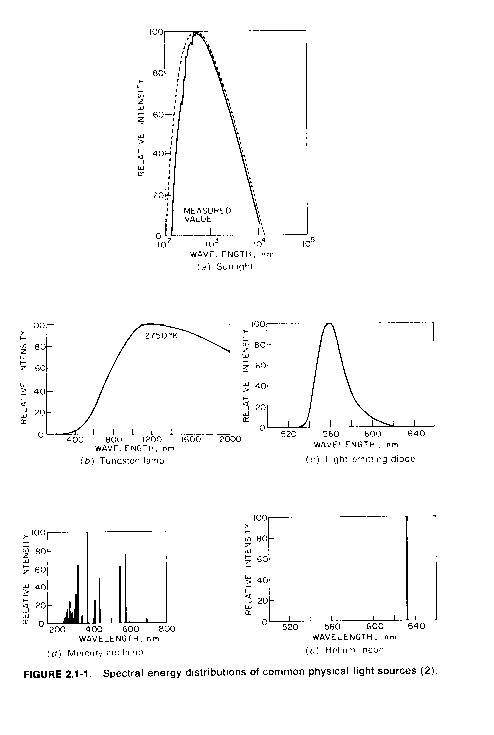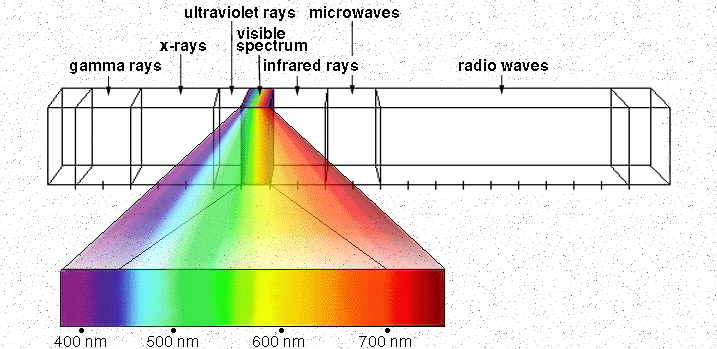|
CS1020: Introduction to Computers |
||||||
|
Color Fundamentals and the HVS
Percieved color is a function of:
- spectral reflectance of scene surfaces
- spectral content of ambient illumination
- spectral response of sensor

Note that we can measure how much red, green and blue we have at a point through the following formulas:

Recall from our discussion of the human visual system, camera's commonly measure R,G,B like our three kinds of cones in our eyes. The spectral responses of the camera is made to mimic the three spectral responses of our three kinds of cones which roughly measure how much red, green and blue is present.
Light Perception
Light, according to Webster's dictionary is: "radiant energy which, by its action on the organs of vision, enables them to perform their function of sight."Light is electromagnetic radiation lying in electromagnetic spectrum over a wavelength band of 350 to 780 nm.
Not much is understood about the mechanisms by which light interacts with the "organs of vision."
A physical light source may be characterized by the rate of radiant engergy (radiant intensity) it emits at a particular spectral wavelength.
Example

The plots above show the spectral energy distribution for (a) sunlight, (b) a tungsten lamp, (c) a light-emitting diode, (d) a mercury arc lamp, and (e) a helium-neon laser.
Observed light spectral engergy distribution depends on the transmissivity and reflectivity of an object.
- Sunlight appears as an extremely bright yellowish-white light
- A tungsten light bulb appears less bright and somewhat yellowish
- A LED appears dim green
- A mercury arc light is a highly bright bluish-white light
- A laser produces an extremely bright and pure red beam.
The Three Common perceptual descriptors of light sensation
- Hue - What is usually referred to as color in lay terms. Determined by dominant wavelengths in the spectral distribution of the light. Hue is the attribute of light that distiguishes a red colored light from a green light or a yellow light.
- Saturation - Measures the amount of white in a color. To say a color is saturated means that is has no white in it and only has spectral components necessary for producing the sensation of that hue. Recall: white is represented by a distribution with equal components at all wavelengths. A pure hue is un saturated by adding a broad spectrum distribution to its own distribution....this is how you take a pure deep red to a lighter red and then to pink. Hence, saturation is the attribute that distinguishes a spectral light from a pastel light of the same hue. In effect, saturation describes the "whiteness" of a light source.
- Intensity - Measure of energy packed into the spectral distribution of the light. You can think of it as a scale fact that is applied to the entire spectral distribution (is related to the area under the spectral distribution curve). If two light sources with the same spectral shape are observed, the source of greater physical intensity will generally appear to be perceptually brighter.
